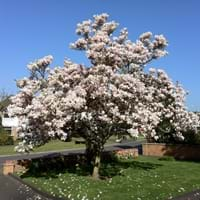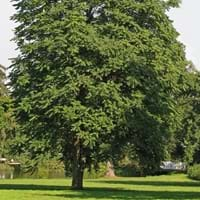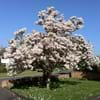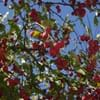Life Span
Perennial
Perennial
Origin
Hybrid origin
China
Types
Gwillimia, Manglietia, Kmeria
Not Available
Number of Varieties
Not Available
Habitat
Subtropical climates, Tropical regions
Fields, Forest edges, Grassland, Roadsides
USDA Hardiness Zone
6-9
4-8
Sunset Zone
Not Available
Not Available
Habit
Oval or Rounded
Arching/Fountain-shaped
Flower Color
Purple, Pink, Light Pink, Rose
Yellow green, Light Green
Flower Color Modifier
Bicolor
Bicolor
Fruit Color
Brown
Pink, Light Green, Sienna
Leaf Color in Spring
Green
Green
Leaf Color in Summer
Green
Dark Green
Leaf Color in Fall
Green, Yellow green, Sandy Brown
Dark Green
Leaf Color in Winter
Not Available
Not Available
Leaf Shape
Ovate
Heart-shaped
Plant Season
Spring, Summer
Spring, Summer
Sunlight
Full Sun, Partial Sun
Full Sun, Partial Sun, Partial shade
Type of Soil
Clay, Loam, Sand
Clay, Loam, Sand
The pH of Soil
Acidic, Neutral
Acidic, Neutral, Alkaline
Soil Drainage
Well drained
Average
Bloom Time
Spring, Late Spring
Spring, Late Spring, Early Summer, Summer
Tolerances
Not Available
Pollution, Drought, Salt, Soil Compaction
Where to Plant?
Ground
Ground
How to Plant?
Seedlings, Transplanting
Seedlings
Plant Maintenance
Medium
Medium
Watering Requirements
Prefer drip-irrigation instead of Over-head watering
Average Water Needs, Do Not over Water
In Summer
Lots of watering
Drought Tolerant, Average Water
In Spring
Moderate
Drought Tolerant, Average Water
In Winter
Average Water
Drought Tolerant, Average Water
Soil pH
Acidic, Neutral
Acidic, Neutral, Alkaline
Soil Type
Clay, Loam, Sand
Clay, Loam, Sand
Soil Drainage Capacity
Well drained
Average
Sun Exposure
Full Sun, Partial Sun
Full Sun, Partial Sun, Partial shade
Pruning
Prune if you want to improve plant shape
Prune in late summer or fall, Prune in late winter, Remove damaged leaves, Remove dead branches, Remove dead leaves
Fertilizers
Fertilize in late fall, fertilize in spring, Requires high amount of nitrogen
All-Purpose Liquid Fertilizer
Pests and Diseases
Aphids, Bacterial Blight, Canker, Crown gall, Hoplia beetle, Leaf burn, Leaf spot, Mealybugs, Powdery mildew, Red blotch, Scorch, Soft scales, Thripes, Wetwood
Red blotch, Spotted Lanterfly
Plant Tolerance
Not Available
Drought, Variety of soil types
Flowers
Showy
Insignificant
Flower Petal Number
Single
Single
Fragrant Bark/Stem
No
Yes
Foliage Texture
Coarse
Coarse
Foliage Sheen
Matte
Matte
Attracts
Not Available
Birds
Allergy
Not Available
allergic reaction, Skin irritation
Aesthetic Uses
Showy Purposes
Beautification, Showy Purposes
Beauty Benefits
Treatment of Dark Spots
No Beauty Benefits
Environmental Uses
Air purification
Air purification
Medicinal Uses
Alzheimer’s Disease, Anxiety, Cancer, Digestion problems, Liver problems, Menstrual Cramps, Respiratory Disorders, Weight loss
Anthelmintic, Antispasmodic, Asthma, Astringent
Part of Plant Used
Whole plant
Bark, Root
Other Uses
Used as Ornamental plant, Used for its medicinal properties
Used as Ornamental plant, Used for its medicinal properties, Used for woodware
Used As Indoor Plant
Yes
No
Used As Outdoor Plant
Yes
Yes
Garden Design
Feature Plant, Foundation, Shade Trees
Shade Trees, Street Trees
Botanical Name
MAGNOLIA 'Alexandria'
AILANTHUS altissima
Common Name
Alexandria Magnolia, Magnolia
Tree-of-Heaven
In Hindi
हिम चम्पा
कल्पवृक्ष
In German
Magnolienbaum
Baum des Himmels
In French
magnolia
Arbre de paradis
In Spanish
árbol de magnolia
Arbol del Cielo
In Greek
Magnolia δέντρο
Δέντρο του Ουρανού
In Portuguese
magnólia
Árvore do céu
In Polish
magnolia drzewa
Drzewo Nieba
In Latin
Magnolia lignum
Lignum de caelo
Phylum
Magnoliophyta
Magnoliophyta
Class
Magnoliopsida
Magnoliopsida
Order
Magnoliales
Sapindales
Family
Magnoliaceae
Simaroubaceae
Clade
Angiosperms, Magnoliids
Angiosperms, Eudicots, Rosids
Tribe
Not Available
Not Available
Subfamily
Not Available
Not Available
Number of Species
Not Available
Importance of Magnolia Tree and Tree-of-Heaven
Want to have the most appropriate plant for your garden? You might want to know the importance of Magnolia Tree and Tree-of-Heaven. Basically, these two plants vary in many aspects. Compare Magnolia Tree and Tree-of-Heaven as they differ in many characteristics such as their life, care, benefits, facts, etc. Every gardener must at least have the slightest clue about the plants he wants to plant in his garden. Compare their benefits, which differ in many ways like facts and uses. The medicinal use of Magnolia Tree is Alzheimer’s Disease, Anxiety, Cancer, Digestion problems, Liver problems, Menstrual Cramps, Respiratory Disorders and Weight loss whereas of Tree-of-Heaven is Anthelmintic, Antispasmodic, Asthma and Astringent. Magnolia Tree has beauty benefits as follows: Treatment of Dark Spots while Tree-of-Heaven has beauty benefits as follows: Treatment of Dark Spots.
Compare Facts of Magnolia Tree vs Tree-of-Heaven
How to choose the best garden plant for your garden depending upon its facts? Here garden plant comparison will help you to solve this query. Compare the facts of Magnolia Tree vs Tree-of-Heaven and know which one to choose. As garden plants have benefits and other uses, allergy is also a major drawback of plants for some people. Allergic reactions of Magnolia Tree are Not Available whereas of Tree-of-Heaven have allergic reaction and Skin irritation respectively. Having a fruit bearing plant in your garden can be a plus point of your garden. Magnolia Tree has no showy fruits and Tree-of-Heaven has showy fruits. Also Magnolia Tree is not flowering and Tree-of-Heaven is not flowering . You can compare Magnolia Tree and Tree-of-Heaven facts and facts of other plants too.





